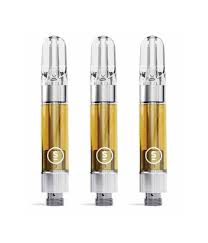Vaping has become a popular method of consuming cannabis, offering users a convenient and discreet way to enjoy the effects of THC. Understanding how THC vape works is essential for those considering this method of consumption. In this guide, we’ll delve into the mechanics of THC vape, exploring its components, the process of vaporization, and how users can effectively utilize vape devices.
Components of THC Vape:
To comprehend how THC vape works, it’s crucial to familiarize oneself with its components:
- Vape Pen: The central device used for vaporizing THC-infused substances. Vape pens come in various shapes and sizes but typically consist of a battery, heating element, and mouthpiece.
- Cartridge or Tank: The container that holds the THC-infused substance, such as oil or concentrate. Cartridges are often attached to the vape pen and contain the heating element responsible for vaporization.
- THC-infused Substance: This can be THC vape oil, distillate, wax, shatter, or live resin. These substances are specifically formulated for vaporization and are loaded into the cartridge or tank for consumption.
The Process of Vaporization:
The process of vaporizing THC involves several steps:
- Activation: The user activates the vape pen by pressing a button or inhaling. This triggers the battery, which powers the heating element.
- Heating: The heating element, typically a coil or ceramic chamber, heats up to a specific temperature, causing the THC-infused substance in the cartridge or tank to vaporize. This temperature is lower than the point of combustion, preventing the substance from burning and producing smoke.
- Vaporization: As the THC-infused substance reaches the vaporization temperature, it turns into vapor, which is then inhaled through the mouthpiece of the vape pen. The vapor contains THC, along with other cannabinoids and terpenes present in the cannabis extract.
- Absorption: Upon inhalation, the vapor enters the lungs, where the THC and other cannabinoids are rapidly absorbed into the bloodstream. From there, they travel to the brain and other parts of the body, producing the desired effects.
Factors Affecting Vaporization:
Several factors can influence the vaporization process and the quality of the vapor produced:
- Temperature: The temperature at which the THC-infused substance is heated affects the vaporization process. Different cannabinoids and terpenes vaporize at different temperatures, so finding the optimal temperature for a desired effect is essential.
- Airflow: The rate at which air flows through the vape device can impact vapor production and inhalation. Adjusting airflow settings or drawing on the mouthpiece with varying intensity can alter the vaping experience.
- Quality of the Substance: The quality and composition of the THC-infused substance play a significant role in vaporization. High-quality extracts with a balanced ratio of cannabinoids and terpenes tend to produce better vapor and a more enjoyable vaping experience.
Safety Considerations:
While THC vape is generally considered safer than smoking, there are still safety considerations to keep in mind:
- Quality and Purity: It’s essential to purchase THC vape products from reputable sources to ensure quality, purity, and safety. Look for products that undergo third-party testing for potency and contaminants.
- Battery Safety: Proper handling and maintenance of vape pen batteries are crucial to prevent malfunctions or accidents. Follow manufacturer guidelines for charging, storage, and usage to minimize the risk of battery-related incidents.
- Regulatory Compliance: Be aware of the legal status of THC vape products in your jurisdiction and purchase them from licensed dispensaries or retailers to comply with local regulations.
Conclusion:
In conclusion, THC vape works by vaporizing THC-infused substances using a vape pen and cartridge or tank. The process of vaporization involves heating the substance to a temperature that releases vapor containing THC and other cannabinoids, which is then inhaled by the user. Understanding the components, mechanics, and safety considerations of THC vape is essential for users to enjoy this method of consumption responsibly. By considering factors such as temperature, airflow, substance quality, and safety precautions, users can optimize their vaping experience and reap the benefits of vaporized THC.



